Surviving Tokyo: Quick Travel Tips
Published: Mar 23, 2025
Last updated: Mar 24, 2025
Tokyo might seem overwhelming, but it's easier than you think

Tokyo might seem overwhelming at first, but it's actually a very easy city to explore. From my perspective as someone traveling from the USA, you'll find it convenient, efficient, and full of incredible experiences. These tips come from my own experiences traveling to Tokyo, and while they've worked well for me, everyone's trip might be a little different. Hopefully, they help you navigate the city with confidence and make the most of your visit!
Etiquette
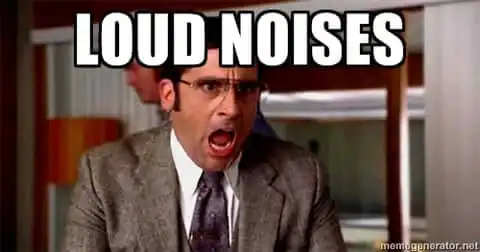
There are tons of videos and articles about Japanese etiquette, many of which are accurate but not all essential for travelers. Here are the most important things to keep in mind:
- Don't be loud - Japan is generally a quiet country. If others around you are quiet, match that energy.
- Don't talk on your cell phone in public - Similar to the first rule, speaking on your phone in trains and other public spaces is considered rude. If you need to take a call, step away to a secluded area.
- Use the money tray - When paying at a store or restaurant, place your money or card on the small tray at the counter instead of handing it directly to the cashier. If there's no tray, use both hands when giving or receiving money.
Japanese to Know

If you don't have time to properly learn Japanese, just focus on these key phrases. They'll take you far.
- Sumimasen - A versatile word meaning excuse me or sorry. Use it to get someone's attention, lightly apologize, or navigate through a crowd. If you only learn one word, make it this one.
- Arigato Gozaimasu - A polite way to say thank you. Perfect for everyday interactions, especially with store staff or restaurant servers.
- Onegaishimasu - A formal way to say please, often used when ordering food. Just point to an item on the menu and say, onegaishimasu.
Using Your Phone
Essential Apps
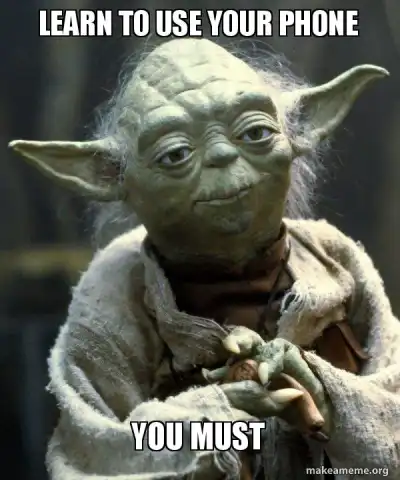
Along with Google Maps and Google Translate (download offline maps and Japanese for backup), these apps can make your trip smoother:
- NERV - A disaster prevention app that provides real-time alerts for earthquakes, tsunamis, and other emergencies. Set it up and enable notifications.
- GO Taxi - A widely used taxi-hailing app in Japan, similar to Uber or Lyft. Enter your destination, set your pickup location, and a taxi will come to you. Credit cards are accepted in-app.
- Suikakeibo - A Suica card balance checker. Only needed if you're using a physical Suica card, as mobile Suica users can check their balance in their phone's wallet app.
Getting Phone Data
If your phone is unlocked and supports eSIM, I highly recommend using one of these providers:
If your phone doesn't support eSIM, you have two main options:
- Check with your carrier for international roaming plans.
- Rent a pocket WiFi device, such as one from Japan Wireless.
I've always used an eSIM, so I don't have firsthand experience with the other options, but they are commonly used by travelers.
Getting Around Tokyo
Paying for Transport
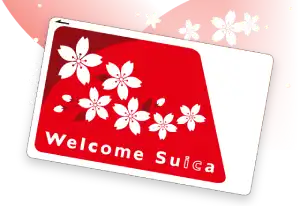
To pay for trains and buses, you have a few options:
- Paper Tickets - Available at ticket machines, but not recommended due to the hassle.
- IC Cards (Suica, Pasmo, etc.) - Convenient rechargeable transit cards.
- Mobile Suica (iPhone only for travelers) - The Suica app works on iPhones but is only available on Android phones sold in Japan.
I always use the Welcome Suica physical card. It works like a regular Suica card but has some key differences:
| Feature | Regular Suica | Welcome Suica |
|---|---|---|
| Target Audience | General public | Tourists |
| Expires | ✔️ 10 years after last use | ❌ 28 days (regardless of use) |
| Deposit | ❌ Required | ✔️ Not required |
| Refunds | ✔️ Allowed | ❌ Not allowed |
A Welcome Suica can be purchased with a credit card, but refills must be made in cash. Since refunds aren't possible, spend any remaining balance at convenience stores before you leave Japan.
For a deeper dive, PiQtour has a great article and video on Suica and IC cards.
How to Navigate the Metro
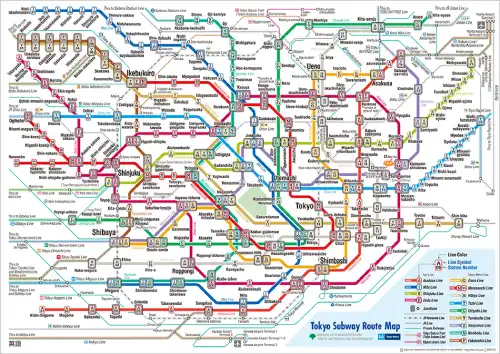
The easiest way to get around is to use Google Maps. Enter your destination and select the public transport option.
I like to adjust a few settings for better results:
- Set preferred mode to train and rail.
- Change filter by to Less walking to prioritize routes with minimal walking.
- Set connecting modes to ride services (turn off drive and bicycle).
Here's an example of mapping from Shinjuku Gyoen National Garden to the Imperial Palace East Garden:
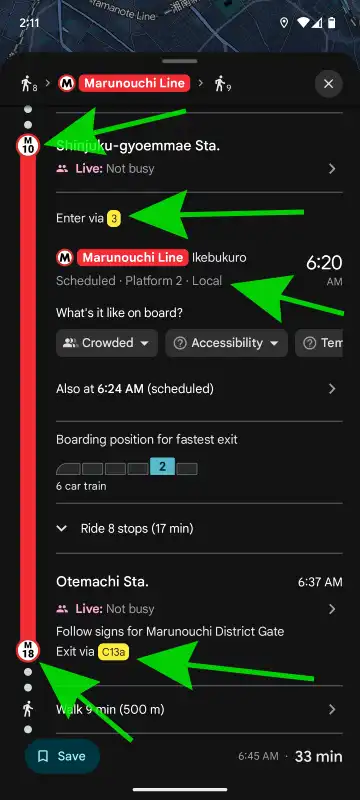
I've marked key details for navigating the metro:
- Your starting station is Shinjuku-gyoemmae Sta. (M10).
- Find the Marunouchi Line (look for the red "M" symbol), head to Platform 2, and board a local train (express and limited express trains skip certain stops).
- Google Maps often suggests the best train car for a quick exit (optional but helpful).
- Get off at Otemachi Sta. (M18).
- Exit via C13a. If you don't see it, follow signs for Marunouchi District Gate.
Quick Tips
Here are some final quick tips:
- Pack light if you can.
- Bring some Japanese Yen in cash. Credit cards are accepted in many places, but you'll likely need physical cash at some point. I tend to spend around ¥10,000 per person per week in cash.
- Always carry your passport. It's your official ID in Japan, and authorities can request to see it.
- Be prepared for lots of walking and stairs (wear comfortable shoes or whatever works for you).
- Bathrooms in Japan are great, but the ones in shopping centers, restaurants, and hotels tend to be the best.
- Bring hand sanitizer in case a public bathroom doesn't have soap.
- Pack your suitcase inside another suitcase so you can bring back two if you shop a lot.
- Stay within a 5-10 minute walk of a Tokyo Metro or JR line for easy access to transit.
- When given the option to pay in Japanese Yen or US Dollars, choose Yen. With 1 USD ≈ 150 JPY as of this writing, you'll usually get a better deal.
- Bring deodorant. Good options are harder to find in Japan.
- Fill out your customs form in advance through Japan Web and use the QR code at customs instead of handwriting a form.
Other Sources
These are other sources for great information on traveling in Tokyo and the rest of Japan.
- Websites:
- Tokyo Cheapo - A go-to resource for budget-friendly travel tips, including accommodations, dining, and activities.
- Japan Guide - A comprehensive travel site covering destinations, attractions, and cultural insights across Japan.
- Videos:
- PiQtour YouTube - Abby covers useful guides on topics like buying Shinkansen tickets, finding Character Street in Tokyo Station, and choosing the right IC card.
- Abroad in Japan - Entertaining and informative videos from Chris Broad, covering life in Japan, travel adventures, and cultural insights.
- Seerasan - Tokyo travel guides and casual vlogs featuring local spots, cafes, and hidden gems.
- Allison in Tokyo - A mix of daily life, food, and travel content from an expat perspective.
- Live streamers:
- PremierTwo - IRL streams capturing life in Japan, from city walks to train rides and events.
- CDawgVA - Fun, chaotic adventures in Japan, from biking cross-country to exploring niche subcultures.
- robcdee - IRL streams featuring humor, spontaneous interactions, and deep dives into Tokyo's hidden gems.
- Forums:
- r/JapanTravelTips - A helpful subreddit where travelers share tips, itineraries, and experiences. There's a lot of useful information, but keep in mind that recommendations can vary based on personal preferences.
- r/JapanTravel - One of the biggest Japan travel subreddits, great for general questions, itinerary help, and travel updates.